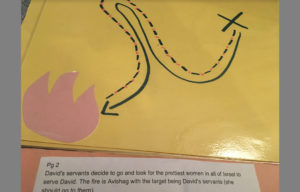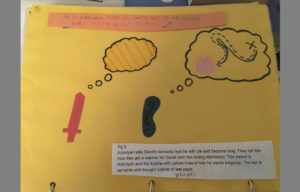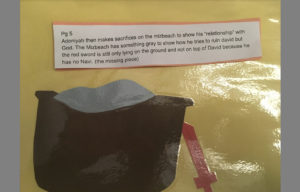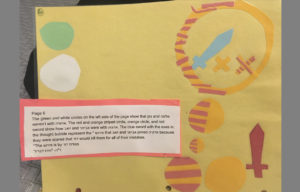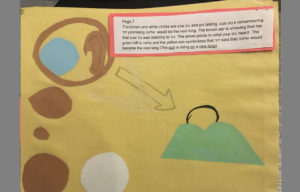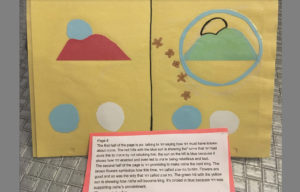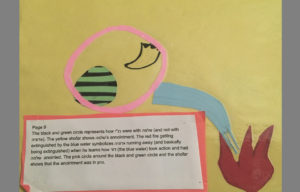This assessment is inspired by a technique developed by David Moss that I learned from him on a program called: Legacy Heritage, Teacher Institute for the Arts. The idea behind his technique is to tell a story from Tanach only through the use of symbols. This enables both the reader and the illustrator to think in an abstract way about the story.
From my perspective as a teacher, this assessment enabled me to ask the students to incorporate all the information that they had learned throughout this chapter, in a unique and creative way. Each student had to imbue her own creation with her own interpretation and style. To gain a better appreciation for his technique you can read about it on his website at https://davidmoss.com/projects/binding-of-isaac
Hear the reflection of the two students who created the sample work on the video below.
As they put it so simply:
“it goes into a deeper meaning of the pesukim and you can actually learn ..can learn a lot of different ways to think about it (the pesukim)” “and you’re also going over it (the pesukim) so many times to think of how to represent it that you just remember it.” - Rachel
“…usually after a test you always just forget what you’ve learned, but in this project, you can’t just memorize it,… or cut out shapes and put it on … paper… You have to explain it thoroughly (your ideas)- you can’t just memorize it and forget about it” - Michelle
Here is the rubric for the assessment:
Text to symbol assessment on Melachim 1
- Please create a “text to symbol” representation of every aspect of the perek. /50
- Please incorporate at least 3 peirushim into your text to symbol representation. If you’re working with a partner you must use at least 5 peirushim. You must fully cite your peirushim. /20
- Please make sure you provide a written description beside each image of how it connects to the perek. /30


